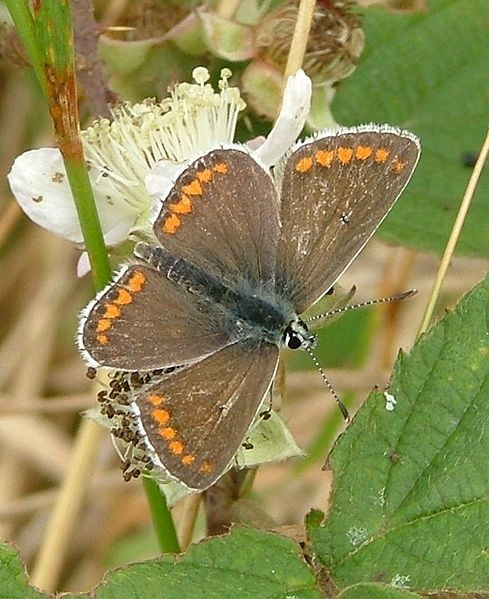Climate Change Forces Butterflies To Fly North

Scientists from the University of York have found that the Brown Argus butterfly has changed its diet and is moving towards North in response to climate change.
The Brown Argus butterfly, commonly found in southern England, has moved towards northern England because of climate change. They also found the butterfly which usually feeds on marjoram, ragwort, thyme and white clover was found eating wild geranium plants. Because the geraniums are widespread in the British countryside, this change in diet has allowed the butterfly to expand its range in Britain at a surprisingly rapid rate.
"Many species are shifting their distributions northwards as the climate warms, but this previously scarce species has surprised everyone by moving its range at over twice the average rate," said Rachel Pateman, researcher at the University of York, in a statement.
"Because wild geraniums are widespread in the landscape, the butterflies can now move from one patch of host plants to next and hence move rapidly through the landscape - expanding their range generation after generation," Chris Thomas, Professor of Conservation Biology at the University of York, in a statement.
The butterfly was considered scarce in Britain in 1980's, with populations undergoing continued decline but it has subsequently undergone a dramatic reversal of fortune. The team put this down to the effect of climate on the ability of the butterfly to use additional food plant species.
In the 1980s, the caterpillars were mainly confined to Rockrose plants growing on the chalk hills of southern England, but the use of plant species in the Geranium family has increased as summer temperatures have increased.
Wild geraniums are suitable food plants for the caterpillars in warm years, but not in colder summers. This seems to be because the plants grow in different places, which provide different microclimates. Common rockrose is found mainly on hot south-facing slopes, where the butterfly can complete its life cycle even in cool summers. This is not the case for the geraniums and so they only become suitable for the butterfly when summers are warm, according to the researchers.
"It is important that we understand how and why species are responding to climate change. Such research would not be possible without the thousands of records of butterflies our dedicated volunteers have collected over many decades, which have allowed us to detect these long-term changes," said Richard Fox, researcher at the charity Butterfly Conservation, in a statement.
"This study has highlighted that species do not respond to climate change in isolation, and that climate change affects how species interact with one another. In the case of the Brown Argus butterfly, changes in interactions with its food plants have helped it to respond to climate change very rapidly. However, changes to interactions may hinder other species, potentially putting them at risk of extinction," Rachel Pateman said.
"There will be winners and losers from climate change. It is important that we begin to understand how the complex interactions between species affect their ability to adapt to climate change so we can identify those that might be at risk and where to focus conservation efforts," said Jane Hill, Professor of the Department of Biology at the University of York.
© Copyright IBTimes 2025. All rights reserved.



















